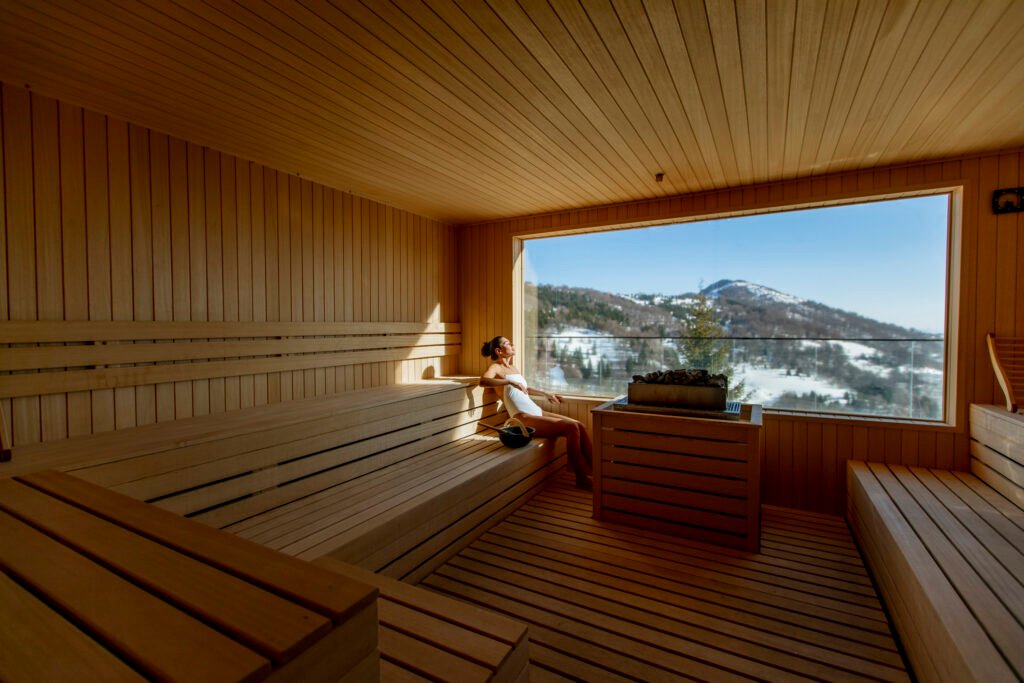The Ultimate Guide to Saunas: Types, Usage, and History

Saunas have been an integral part of wellness practices for centuries, offering a myriad of health benefits and relaxation opportunities. This comprehensive guide will explore the different types of saunas, their usage, and the rich history behind these heat-based therapies. As we delve into the world of saunas, we’ll uncover the science-backed benefits and potential risks associated with regular sauna use.
A Brief History of Saunas
The history of saunas dates back thousands of years, with roots deeply embedded in various cultures around the world. However, the most well-known and influential sauna tradition comes from Finland.
Traditional Finnish Saunas
Traditional Finnish saunas have been an essential part of Finnish culture for over 2,000 years. These wood-burning saunas were initially used for bathing, cooking, and even childbirth. The Finns believed that saunas had healing properties and considered them sacred spaces. This belief has persisted through the ages, with saunas remaining an integral part of Finnish daily life. In traditional Finnish saunas, rocks are heated to high temperatures, and water is poured over them to create steam, known as “löyly.” This practice increases humidity and intensifies the heat experience. The combination of dry heat and steam in Finnish saunas is believed to offer unique health benefits.

Spread of Sauna Culture
As Finnish immigrants spread across the globe, they brought their sauna culture with them. In the United States, for example, Finnish settlers introduced saunas in the early 20th century, particularly in the Midwest region. Today, saunas have gained popularity worldwide, with various types and styles emerging to cater to different preferences and health goals.
Types of Saunas
There are several types of saunas, each offering unique experiences and potential health benefits. Let’s explore the most common types:
1. Traditional Dry Saunas
Traditional dry saunas, also known as Finnish saunas, use dry heat to warm the body. These saunas typically operate at high temperatures, ranging from 160°F to 200°F (71°C to 93°C), with low humidity levels of 10-20%.
The heat is generated by burning wood or using electric heaters to warm rocks, which then radiate heat throughout the sauna room.
Key features:
✔ High temperatures
✔ Low humidity
✔ Wood-burning or electric heat sources
✔ Often includes the option to add steam by pouring water over hot rocks

2. Steam Rooms
Steam rooms, also called steam saunas, offer a different experience from dry saunas. These rooms are filled with moist heat, with temperatures typically ranging from 110°F to 120°F (43°C to 49°C) and humidity levels near 100%.
The wet heat in steam rooms can feel more intense than the dry heat of traditional saunas, despite the lower temperatures.
Key features:
✔ Lower temperatures compared to dry saunas
✔ Very high humidity
✔ Moist heat environment
✔ Often tiled or made of non-porous materials to withstand moisture

3. Infrared Saunas
Infrared saunas are a more recent innovation in sauna technology. Unlike traditional saunas that heat the air around you, infrared saunas use infrared light to directly heat your body.
These saunas operate at lower temperatures, typically between 120°F to 140°F (49°C to 60°C), making them more tolerable for some users.
Key features:
✔ Lower temperatures than traditional saunas
✔ Uses infrared light to heat the body directly
✔ Dry heat environment
✔ Often more energy-efficient than traditional saunas
4. Far-Infrared Saunas
A subset of infrared saunas, far-infrared saunas use a specific wavelength of infrared light. This type of infrared is believed to penetrate deeper into the body, potentially offering unique health benefits.
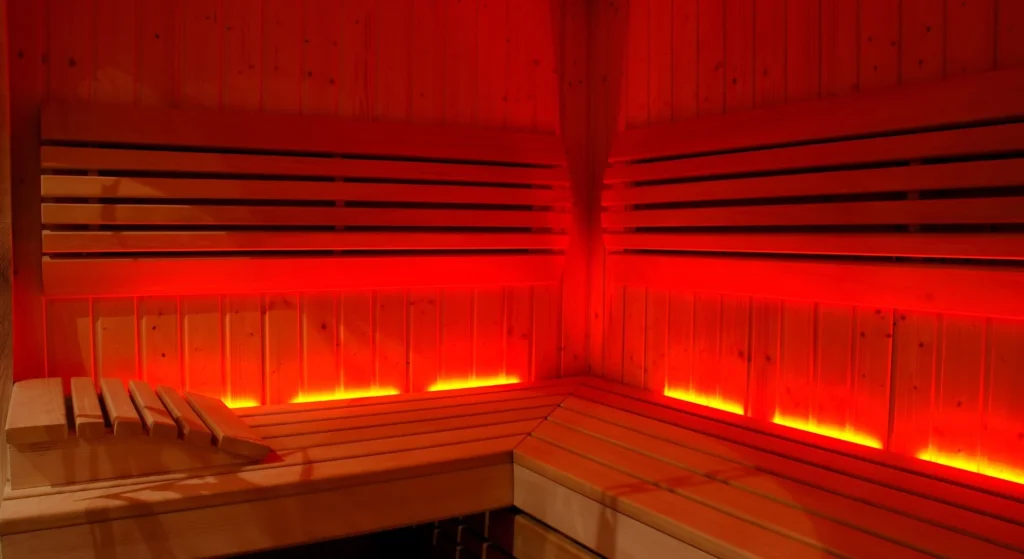
5. Wood-Burning Saunas
Wood-burning saunas are a traditional type of sauna that uses a wood-fired stove to heat rocks. These saunas offer a more authentic experience and are often preferred by sauna enthusiasts for their ambiance and the quality of heat they produce.
Key features:
✔ Uses wood as a heat source
✔ Can produce both dry and wet heat (by adding water to the rocks)
✔ Often associated with a more traditional sauna experience
✔ Requires more maintenance and preparation than electric saunas
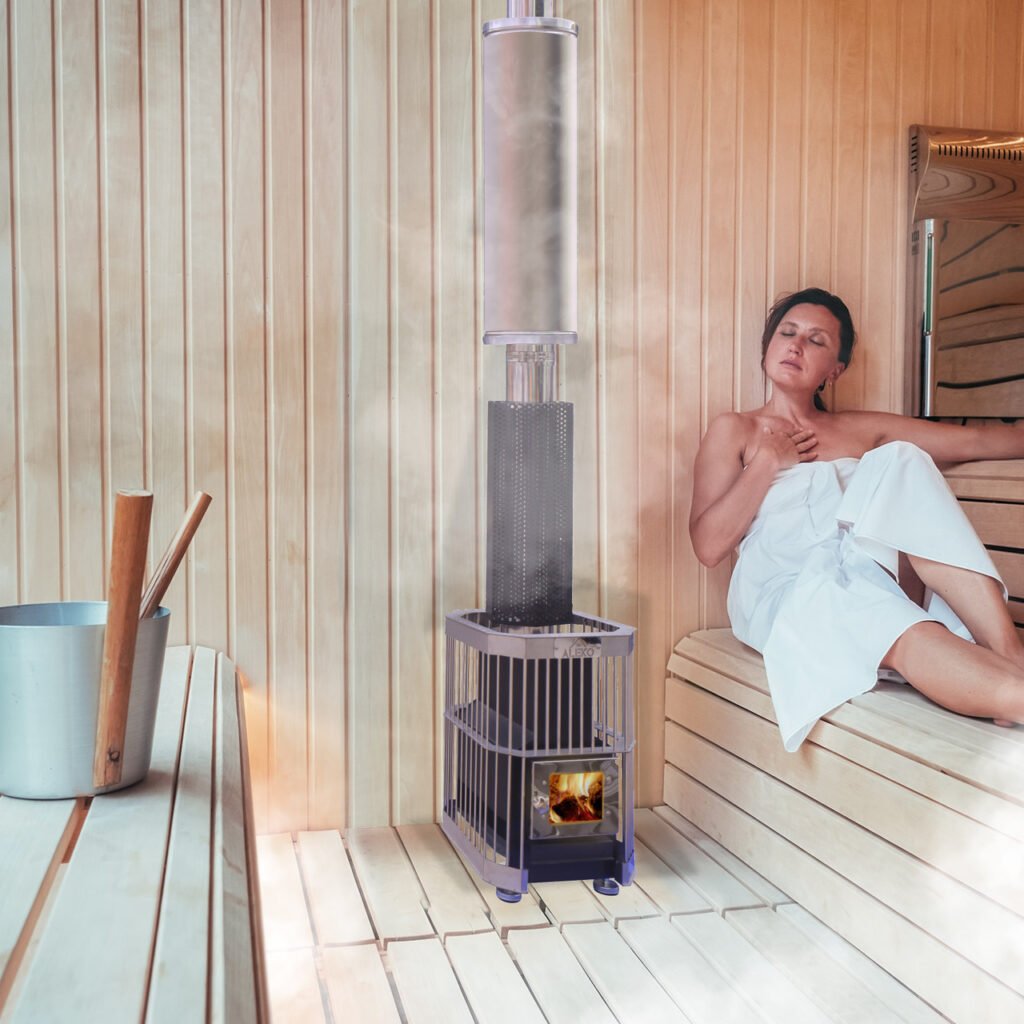
Health Benefits of Sauna Use
Recent research has shown that regular sauna use can offer a wide range of health benefits. While more studies are needed to fully understand the extent of these benefits, the current evidence is promising.
Cardiovascular Health
One of the most well-studied areas of sauna benefits is cardiovascular health. A landmark Finnish study published in JAMA Internal Medicine in 2015 found that regular sauna use was associated with a reduced risk of cardiovascular disease and all-cause mortality.
✔ Improved heart health: Regular sauna bathing has been linked to a lower risk of heart disease and sudden cardiac death. The heat exposure during a sauna session causes blood vessels to dilate, improving blood flow and reducing blood pressure.
✔ Lower risk of hypertension: A study published in the American Journal of Hypertension in 2017 found that regular sauna use was associated with a reduced risk of developing hypertension (high blood pressure).
✔ Enhanced cardiovascular function: Sauna bathing increases heart rate and cardiac output, similar to the effects of moderate physical activity. This can help improve overall cardiovascular fitness.

Mental Health and Stress Reduction
Saunas are not just beneficial for physical health; they can also have positive effects on mental well-being.
✔ Stress reduction: The heat exposure in saunas can trigger a relaxation response in the body, helping to reduce stress levels and promote a sense of calm.
✔ Improved mood: Some studies have suggested that regular sauna use may help alleviate symptoms of depression and anxiety.
✔ Better sleep: The relaxation induced by sauna bathing, coupled with the subsequent cooling of the body, may help improve sleep quality.

Pain Relief and Muscle Recovery
Athletes and individuals suffering from chronic pain conditions may find relief through sauna use.
✔ Reduced muscle soreness: The heat from saunas can help relax muscles and increase blood flow, potentially reducing muscle soreness after physical activity.
✔ Chronic pain management: Some studies have shown that regular sauna use may help alleviate symptoms of chronic conditions such as fibromyalgia and rheumatoid arthritis.

Detoxification and Skin Health
Sweating induced by sauna use is often touted as a way to detoxify the body, although the scientific evidence for this is mixed.
✔ Skin cleansing: Sweating in a sauna can help cleanse the skin by flushing out impurities and dead skin cells.
✔ Improved skin condition: Some people report improvements in skin conditions such as psoriasis and eczema with regular sauna use, although more research is needed in this area.

Respiratory Health
Sauna use may have benefits for respiratory health, particularly in the case of steam rooms.
✔ Improved lung function: The heat and humidity in saunas, especially steam rooms, can help open up airways and may provide relief for individuals with respiratory conditions such as asthma or chronic obstructive pulmonary disease (COPD).
✔ Reduced risk of respiratory diseases: Some studies have suggested that regular sauna use may be associated with a lower risk of respiratory diseases.

A Comprehensive Guide to Safe and Effective Sauna Use
Saunas offer a unique blend of relaxation and potential health benefits, but proper usage is crucial to ensure safety and maximize the positive effects. This guide will walk you through the essential steps for a safe and beneficial sauna experience.
Preparation
Before entering the sauna, it’s important to prepare your body:
✔ Hydration: Drink 1-2 glasses of water to prepare for increased sweating.
✔ Light Meal: Consume easily digestible foods 1-2 hours before your session.
✔ Shower: Take a shower to open your pores and enhance the sweating process.
✔ Appropriate Attire: Wear loose, comfortable clothing or a bathing suit made of natural, breathable fabrics.

During the Sauna Session
Posture and Positioning
✔ Beginners: Start on lower benches where temperatures are milder.
✔ Experienced Users: Upper benches offer higher temperatures for intense sweating.
✔ Lying Down: This position promotes even sweating, but sit up for the last few minutes to adjust circulation.
✔ Use Towels: Always sit or lie on a towel for hygiene and comfort.

Breathing Techniques
✔ Deep Breathing: Practice slow, controlled breathing to enhance relaxation.
✔ Rhythmic Breathing: Maintain a rhythm with slightly longer exhales to promote relaxation.
✔ Mindful Breathing: Focus on your breath and the sensation of heat for a meditative experience.

Duration and Frequency
✔ Session Length: Begin with 5-10 minutes, gradually increasing to 15-20 minutes as your body adapts.
✔ Listening to Your Body: Exit immediately if you feel dizzy, lightheaded, or uncomfortable.
✔ Frequency: Aim for 2-3 sessions per week, adjusting based on your health goals and body’s response.
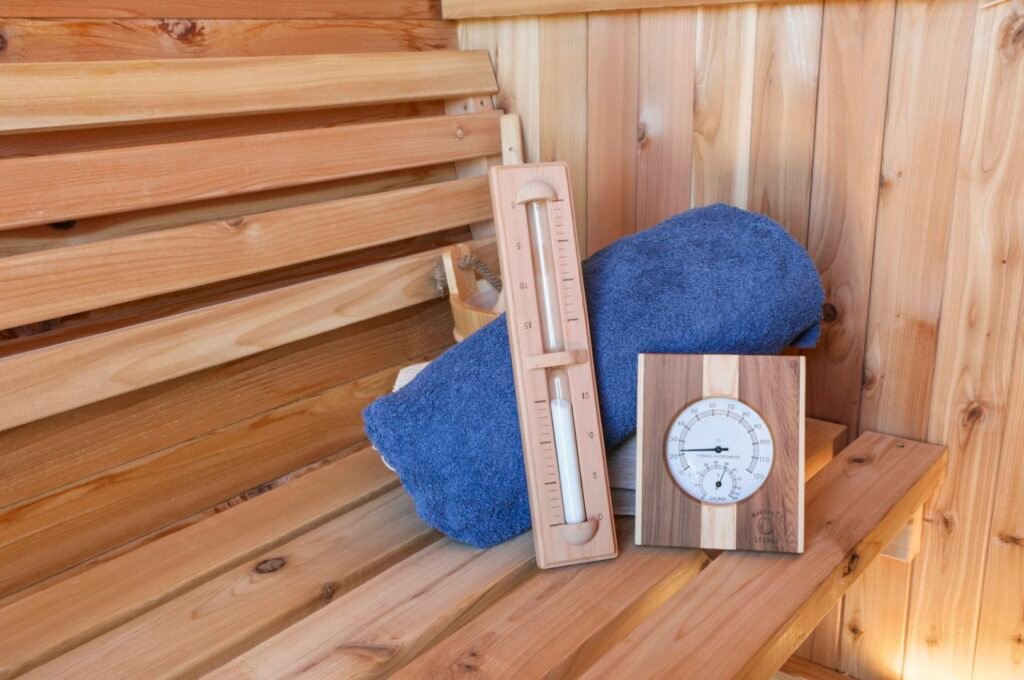
Post-Sauna Care
Proper post-sauna care is essential for recovery and maximizing benefits:
✔ Gradual Cooling: Allow your body to adjust to cooler temperatures for about 10 minutes .
✔ Cold Shower or Towel: Use cold water to close pores and rinse off sweat .
✔ Rest: Spend time in a cool environment to stabilize your body temperature.
✔ Rehydration: Drink at least one full glass of water immediately after exiting the sauna . Continue hydrating with 2-4 glasses over the next few hours.
✔ Avoid Alcohol: Refrain from alcohol consumption before and after sauna use.

Safety Precautions
Certain individuals should exercise caution or avoid sauna use:
✔ Heart Conditions: Those with unstable angina, recent heart attacks, or severe aortic stenosis should avoid saunas.
✔ Pregnancy: Pregnant women should consult their healthcare provider before using a sauna.
✔ Acute Illnesses: Avoid saunas when experiencing fever or acute inflammatory conditions.
✔ Chronic Conditions: Individuals with diabetes, deep vein thrombosis, or chronic heart failure should consult their healthcare provider.

Maximizing Benefits
To get the most out of your sauna experience:
1. Consistency: Regular use (2-3 times per week) can lead to cumulative health benefits.
2. Mindfulness: Use the time to disconnect and focus on the experience.
3. Combine with Exercise: Consider using the sauna after physical activity for enhanced recovery.
4. Stay Hydrated: Proper hydration before, during, and after sauna use is crucial for safety and effectiveness.

By following these guidelines, you can safely enjoy the numerous potential benefits of sauna bathing, including stress reduction, improved cardiovascular health, and enhanced relaxation.
Always prioritize your comfort and health, and consult with a healthcare provider if you have any concerns or pre-existing medical conditions. With proper use, the sauna can become a valuable tool in your wellness routine, offering a unique combination of relaxation and health benefits.

Proper Sauna Usage and Safety Considerations
While saunas offer numerous potential health benefits, it’s essential to use them safely and responsibly.
Here are some guidelines for proper sauna usage:
1. Start slowly: If you’re new to saunas, begin with shorter sessions (5-10 minutes) at lower temperatures and gradually increase the duration and heat as your body adapts.
2. Stay hydrated: Drink plenty of water before, during, and after your sauna session to replace fluids lost through sweating.
3. Listen to your body: If you feel dizzy, nauseous, or uncomfortable, exit the sauna immediately.
4. Cool down properly: After your sauna session, take time to cool down gradually. This can include a cool shower or a brief rest at room temperature.
5. Avoid alcohol: Do not consume alcohol before or during sauna use, as it can increase the risk of dehydration and overheating.
6. Consult your doctor: If you have any pre-existing health conditions, especially heart disease or high blood pressure, consult your primary care physician before using a sauna.

Special Considerations
✔ Pregnancy: Pregnant women should consult their healthcare provider before using a sauna, as high temperatures may pose risks to fetal development.
✔ Medications: Some medications may affect the body’s ability to regulate temperature. Check with your doctor if you’re taking any medications.
✔ Children: Children should only use saunas under adult supervision and for shorter durations than adults.
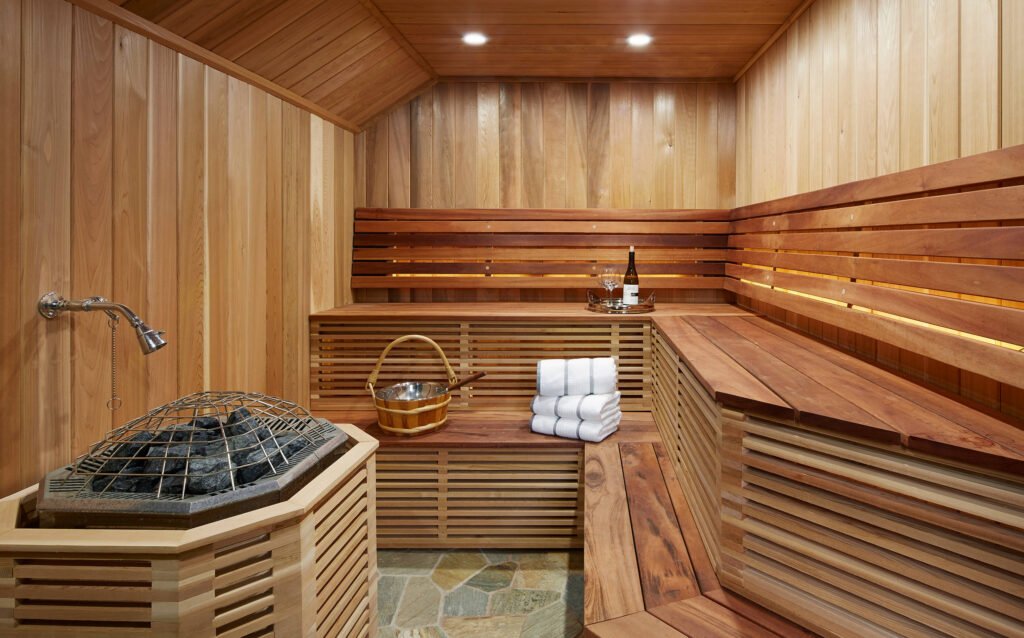
Comprehensive Comparison of Saunas and Steam Rooms
Saunas and steam rooms are both popular wellness facilities that offer unique experiences and health benefits. This comprehensive comparison will explore their differences in terms of characteristics, health effects, cultural significance, and practical considerations.
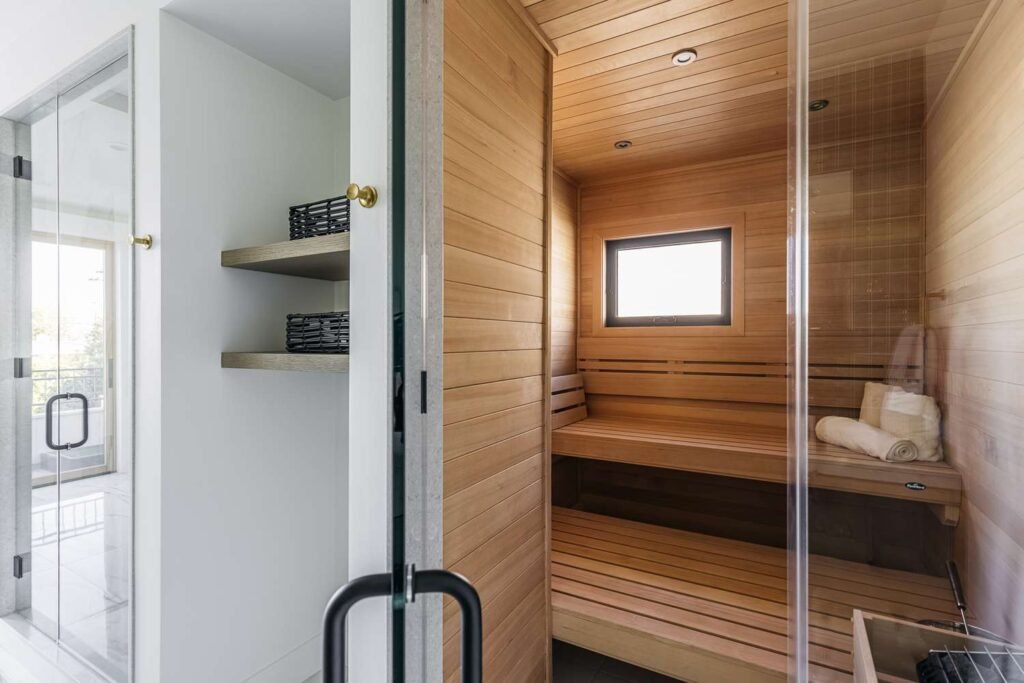
Characteristics and Operation
Saunas
Saunas are characterized by their dry heat environment, typically operating at high temperatures ranging from 160 to 220 degrees Fahrenheit (70 to 95 degrees Celsius). The humidity level in a sauna is quite low, usually between 5% to 20%. Saunas are often constructed with wooden walls and benches, which help to insulate the heat and provide a traditional aesthetic.
Traditional smoke sauna, representing the oldest known saunas in Finland. Saunas can be heated using various methods, including electric heaters, wood-burning stoves, or infrared lamps. Traditional saunas use stones heated by these methods, and water can be poured over the stones to create steam and increase humidity temporarily.

Steam Rooms
In contrast, steam rooms provide a moist heat environment, with temperatures generally lower than saunas, ranging from 110 to 120 degrees Fahrenheit (43 to 49 degrees Celsius). The humidity level in a steam room is extremely high, often reaching 100%. This creates a very moist environment, which can feel hotter than it actually is due to the inability of sweat to evaporate.
Steam rooms are typically built with non-porous materials like tile, glass, or acrylic to withstand the high humidity and prevent moisture from escaping. A steam generator is used to produce steam, which is then channeled into the room. The room must be sealed to maintain the high humidity levels, and it often includes a sloped ceiling to prevent condensation from dripping onto users.
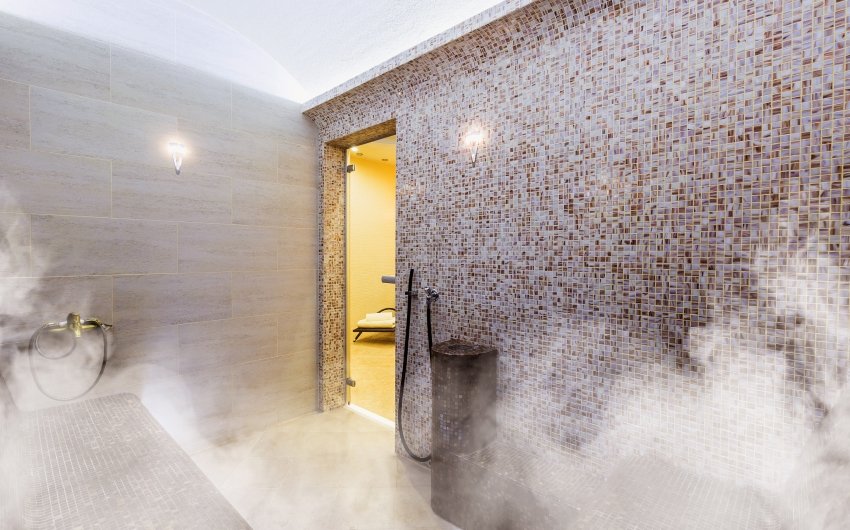
Health Effects
Both saunas and steam rooms offer a range of health benefits, but their effects can differ due to their distinct environments.
Sauna Health Benefits
1. Cardiovascular Health: Saunas have been shown to improve cardiovascular health by increasing heart rate and improving circulation, similar to moderate exercise. This can lead to a reduced risk of cardiovascular diseases.
2. Stress Reduction: The heat from saunas can help reduce stress by promoting relaxation and reducing cortisol levels, which are associated with stress.
3. Pain Relief: Saunas can help relieve muscle soreness and joint pain by increasing circulation and reducing muscle spasms.
4. Potential Cognitive Benefits: Some studies suggest that regular sauna use may reduce the risk of neurocognitive diseases like dementia and Alzheimer’s disease, although more research is needed to confirm these findings.

Steam Room Health Benefits
1. Congestion Relief: Steam rooms are particularly effective in relieving congestion by warming the mucous membranes and encouraging deep breathing, which can help clear sinuses and lungs.
2. Skin Health: The high humidity in steam rooms helps open pores and cleanse the skin, potentially leading to clearer and more even-toned skin.
3. Inflammation Reduction: The moist heat in steam rooms can help reduce systemic inflammation, which is linked to various health conditions such as stroke and heart disorders.
4. Improved Circulation: Like saunas, steam rooms can improve circulation, which may lead to lowered blood pressure and a healthier heart.
It’s important to note that both environments carry potential risks, such as dehydration and overheating, especially if safety guidelines are not followed.
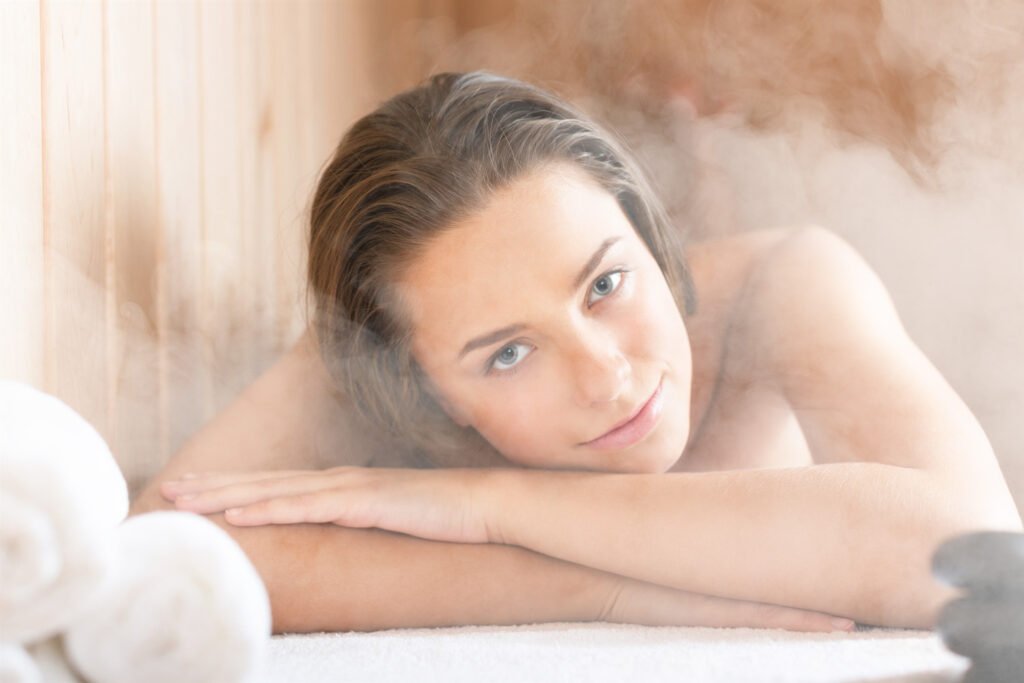
Cultural Significance
Saunas in Finnish Culture
Saunas have deep roots in Finnish culture, with evidence suggesting their use as early as 2,000 years ago. The word “sauna” itself is of Finnish origin, and early saunas were simple pits dug into the ground, heated with stones from a fire, known as “smoke saunas”.
In Finland, saunas are more than just a place to relax; they are a vital part of social life and cultural identity. Nearly all Finns take a sauna at least once a week, and it is common for families to own portable saunas for camping trips.

Steam Rooms in Roman and Middle Eastern Cultures
The tradition of steam bathing can be traced back to ancient Roman and Greek cultures. The Romans were known for their elaborate public bathhouses, or thermae, which included steam rooms as a central feature. These bathhouses were not only places for cleansing but also served as social and economic hubs.
The Turkish hammam, a descendant of the Roman thermae, became integral to Islamic culture, focusing on purification and relaxation. Hammams were spaces where major life events were celebrated, and bathing rituals were incorporated into weddings and births.

Practical Considerations
Installation and Maintenance
Saunas generally have lower installation and maintenance costs compared to steam rooms. The cost of installing a sauna can range from $3,000 to $20,000, while steam rooms can cost between $5,000 to $30,000. Saunas require regular cleaning and occasional checks of heating elements, costing around $100 to $300 per year for maintenance. Steam rooms, due to their high humidity, require more frequent cleaning and maintenance to prevent mold growth, with annual costs ranging from $200 to $500.

Operating Costs
Monthly operating costs for saunas vary based on the type of heater, typically ranging from $15 to $30 for electric saunas and $10 to $15 for infrared saunas. Steam rooms have higher operating costs due to electricity and water usage, ranging from $50 to $150 per month.

User Preferences
Personal preferences play a significant role in choosing between saunas and steam rooms. Some users prefer the dry heat of saunas, which is associated with intense relaxation and muscle recovery. Others favor the moist heat of steam rooms for its benefits to skin hydration and respiratory health. The choice often depends on individual comfort levels, health goals, and cultural preferences.
In conclusion, while both saunas and steam rooms offer valuable wellness benefits, they provide distinct experiences tailored to different preferences and needs. Understanding these differences in characteristics, health effects, cultural significance, and practical considerations can help individuals make informed decisions about which environment best suits their wellness goals and lifestyle.
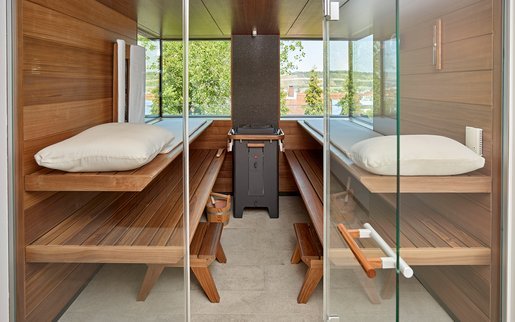
Conclusion
Saunas offer a unique combination of relaxation and potential health benefits. From traditional Finnish saunas to modern infrared varieties, there’s a type of sauna to suit every preference. While the research on sauna benefits is promising, it’s important to remember that sauna use should complement, not replace, other healthy lifestyle habits such as regular physical activity and a balanced diet.
As with any wellness practice, it’s crucial to approach sauna use responsibly and with awareness of your own health status. By doing so, you can safely enjoy the warmth, relaxation, and potential health benefits that saunas have to offer. Whether you’re seeking cardiovascular benefits, stress relief, or simply a moment of peaceful relaxation, the persistent heat of a sauna session might just be the wellness boost you’re looking for.
